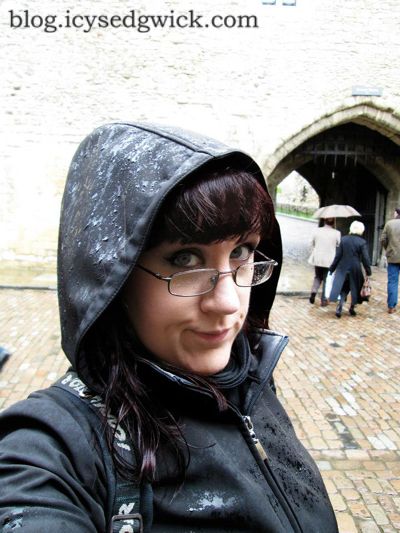 Sunday saw us check out of our hotel and take a trip along the District line back to old London to visit the Tower, one of the five Historic Royal Palaces in the city. I'd been to the Tower a couple of times before, the last time about four years ago, but Gemz had never been and wanted to see the Crown Jewels. As you can see, I wasn't particularly impressed by the damp and drizzly weather, and I was just glad I'd taken my raincoat with me! I think I had hoped that the poor weather might put people off venturing out of doors, but the Tower was really busy, and the continual rain meant that all of the indoor attractions were rather full. The Jewel House in particular was very busy, although I can't help thinking the mammoth steel doors are a better indication of royal might than the impressive range of royal plate and jewelled ephemera on display. It's a good job they have a moving walkway in front of the crowns, otherwise you'd never be able to get anywhere near them!
Sunday saw us check out of our hotel and take a trip along the District line back to old London to visit the Tower, one of the five Historic Royal Palaces in the city. I'd been to the Tower a couple of times before, the last time about four years ago, but Gemz had never been and wanted to see the Crown Jewels. As you can see, I wasn't particularly impressed by the damp and drizzly weather, and I was just glad I'd taken my raincoat with me! I think I had hoped that the poor weather might put people off venturing out of doors, but the Tower was really busy, and the continual rain meant that all of the indoor attractions were rather full. The Jewel House in particular was very busy, although I can't help thinking the mammoth steel doors are a better indication of royal might than the impressive range of royal plate and jewelled ephemera on display. It's a good job they have a moving walkway in front of the crowns, otherwise you'd never be able to get anywhere near them!The Tower of London was founded in the latter half of 1066 after the Norman Conquest of Britain, and only Tower Hill separates it from the eastern boundary of the City of London. It's been used as both a royal palace and a prison, not to mention a symbol of royal power, and various monarchs have added different towers and functions. It used to house the Royal Mint and the treasury, as well as a Menagerie, and currently houses the Crown Jewels in the Jewel House, as well as the Royal Armouries in the White Tower. It also houses seven ravens, due to the legend that says if the ravens leave, the Tower will fall.
The Royal Armouries in the White Tower contain both the weaponry belonging to individual monarchs, such as Charles I's suit of armour and an articulated suit of armour for the thirteen year old Edward VI, as well as those weapons etc. that have been donated as gifts over the years. For example, they have a suit of samurai armour dating back to 1610. We came across this particular display, where a range of weapons and other items, were turned into a gigantic dragon. It was rather steampunk in its own way, and I couldn't not take a photo. I've been trying to find it online to see if there's a particular reason for its being there, but I can't find anything, so I don't know if it signifies anything, or a curator just got bored and wanted to do something a bit different with one of the displays.
One of the displays is of weapons as art, and I couldn't not take this photo! Apparently the legendary US gunsmiths Smith & Wesson donated this revolver to the Royal Armouries in 1989. The Trustees of the Armouries commissioned Tiffany & Co. to decorate it as part of their policy to commission and collect fine craftsmanship. The decoration features leaves representing five different woods used in gun-making. They did also have a couple of other guns but they were a bit too 'bling' for my liking.
This is me faffing about outside the White Tower, pointing at a rather large cannon. I pinched this from Gemz, which is why I've tagged it with her web address instead of mine. (Give her website a look if you need to employ a web ninja!) As you can see, I have no problem with posing like an idiot in photographs, especially where heavy weaponry is involved. I think the rain had briefly stopped by this point, but the day was still somewhat dull and overcast. Still, we're Northerners so we're used to crap weather. All I can say is at least it wasn't snowing!
One of the strange things about the Tower is the fact it was once this imposing symbol of royal power, and it's now been dwarfed by the rest of modern London, now nothing more than a tourist attraction on the banks of the Thames. I took this photo from beside the south east corner of the White Tower, looking across the inner ward towards the Shard on the southern side of the Thames. The little black dot on the lawn to the right of the tree is one of the Tower's famous ravens, having a bit of a wander. While inside any of the buildings, you really do get a sense of the age and history of the place, but the second you get outside, the skyline is dominated by the hideous glass monuments to commerce that seem to have sprung up all over London. I suppose it's one of the signs of modern life, and perhaps I'm just too much of a traditionalist, but I really do prefer the 'historic' parts of London, as opposed to those glittering modern areas.
All over the Tower they now have these wire sculptures of various animals by Kendra Haste - we spotted lions, an elephant, a polar bear, a leopard and monkeys, all testament to the Menagerie that the Tower had between 1251 and 1835. No one actually knows where the Menagerie was kept, although the lions were kept, somewhat unsurprisingly, in the Lion Tower. The Menagerie was originally for the benefit of the monarch, and visiting royalty often gifted animals to join the Menagerie, but it was opened to the public in the seventeenth century. It was moved out to a site in Regent's Park in the nineteenth century, where it became London Zoo.
After the Tower, we crossed Tower Bridge, and took a walk along the South Bank towards the Tate Modern, passing Southwark Cathedral, Borough Market, and this, the Golden Hinde II in Pickford's Wharf. It's a replica of Sir Francis Drake's famous vessel, and while I've been on the original in Brixham, I've never been on the replica. It's something of a favourite for children's pirate themed parties (well Drake was a privateer, which is pretty much a polite way of saying he was a State-sponsored pirate) and there was one going on as we went past.
From there it was on to the Tate Modern, which is not one of my favourite art galleries due to my general aversion to modern art, but it's always worth a look. We'd wanted to see the Lichtenstein exhibition but so did the world and his wife so we ended up having to give it a miss due to the time difference between the time we were there, and the next available time for entry. We had a look around the other galleries, and I was somewhat disappointed to see that their collection of Pop Art has gone, as has their collection of Soviet political posters (I can only assume they're on loan to another gallery elsewhere). Obviously you're not really supposed to take photos, but I did take a photo of this particular piece of art. Well, it's a mirror, so I'm not sure how an artist could really claim that a mirror is art, but I don't really want to get into debates around found art, or other philosophical considerations. Plus, as the subject of the photo is me, I can claim copyright :-p
Here's me posing with an example of knitting in the Tate Modern, so really, if it's in an art gallery then it must be art...right? I've been campaigning for knitting to be considered art for a while! This is an example of tubular knitting, done on double pointed needles, and I think this one was done using nylon. That would absolutely wreck your fingers, but it certainly looks good It's actually Untitled by Marisa Merz, from 1969, and is in the Energy and Process gallery. I think knitting IS an art but it is also a process, and a very valuable one, so it was nice to come across something representative of my hobby in an art gallery.
Here's the view of the Millennium Bridge from the viewing platform of the Tate Modern. Obviously that's the extremely distinctive dome of St Paul's Cathedral that you can see beyond all of the other buildings. The London skyline never fails to amaze me - Newcastle's is naturally somewhat smaller, and given our city centre stretches up a hill from the Quayside, our skyline is a bit more 'staggered', whereas the flat expanse of London gives you a good idea of its scale. I do quite like the Millennium Bridge, and if you've seen the Harry Potter films, you should recognise it.
You are now entering the City of London...here be dragons! One of the weird things about London is that it's actually two cities for the price of one. The City is the square mile (well, 1.12 square miles) in the east that contains the likes of the Bank of England and Guildhall, and the area around it is Greater London. Boris Johnson might be Mayor of London, but the City has its own, the Lord Mayor of London, who holds office for a year. The City is pretty much the site of Londinium, and is therefore the oldest part of town, and the London Wall used to originally mark its boundaries. There are only fragments of it left, making it pretty useless as a wall, and I love the fact that they now use silver dragon statues to mark its boundaries. The dragons also appear on the City of London Corporation's crest, and some people think they refer to the legend of St George. This particular dragon marks the boundary between the City of London and the City of Westminster, and stands outside Temple Bar.
We walked along Aldwych from here to reach Somerset House, the palatial building on the north bank of the Thames where they now hold London Fashion Week. I'd only ever been in the courtyard before, and it's home to various gallery spaces, as well as the Courtauld Institute and part of King's College. Other royal palaces have stood on the site for centuries, but the present Somerset House was built in the late 1700s/early 1800s as a public building for organisations such as the Admiralty. It was even the home of the Inland Revenue until a couple of years ago.
This was one of the exhibitions that was on, the Wool House expo for the Campaign of Wool. Considering Gemz and I are both very keen knitters (and I've recently taken up crochet), we couldn't very well not have a look around, especially since it was almost finished as an exhibition (it actually finished on Sunday). The Campaign for Wool has HRH The Prince of Wales as a patron, and it's a global community of sheep farmers, retailers, designers, manufacturers and wool users who want to educate people about the benefits and versatility of wool. There's a real push to make the wool industry big again to help those small businesses and local farmers that depend on it. Wool House was the world's biggest celebration of wool, and contained all sorts of yarn-related delights, from rooms decorated entirely with woollen products, to educational events and workshops. They also had rooms dedicated to wool in the fashion industry, including shoes by Vivienne Westwood that I would kill to own*! *Not really.
This is one of the rooms on display, and I'm determined that I will one day have a room like this in a house I own, with rustic wooden furniture and plenty of fabric and wool to hand. This is the Natural Room by Josephine Ryan, and she's created a room with naturally coloured yarns, coarse textures and layers. Other rooms in the exhibition featured interiors for modern living rooms, children's nurseries and entrance halls. If wool was a cheaper fabric, I'm sure I'd try and use a lot more of it at home! It was certainly a very inspirational exhibition and had me itching to reach for a ball of yarn and a pair of needles.
The other thing we saw was the Positive View Foundation's exhibition, Landmark: The Fields of Photography. It's on until 28 April and it's FREE so if you're in London and you like photography, I really recommend it. It's a huge exhibition, and knocks the stuff at the Tate Modern into a cocked hat. It features work by photographers from all over the world, with the common theme being that of landscape. It's not all digital work, either - some of the photographers have used 19th Century techniques involving plate photography, while others have used drones and satellites to capture their images. The exhibition's curator, William A. Ewing, says that “landscape has been and remains one of the most powerful forms of photography, and is even more so in a world which is changing so fast we can hardly keep up" and you get the feeling that the only way you'll be able to see a lot of these landscapes is through exhibitions like this, because the landscapes are either totally inaccessible, or on the brink of destruction.
It was a really busy and tiring weekend, but I thoroughly enjoyed the mix of history and culture, and I came back with a lot of ideas marinading in the back of my mind...

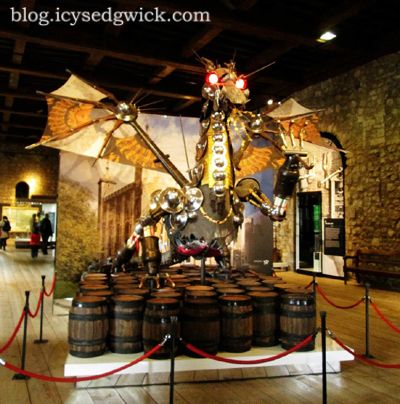

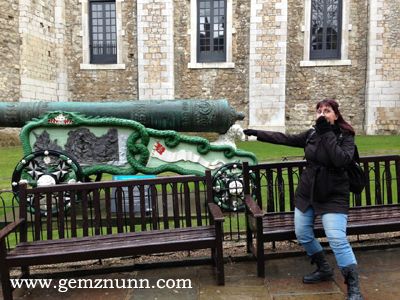

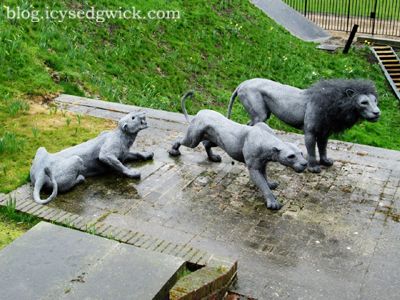
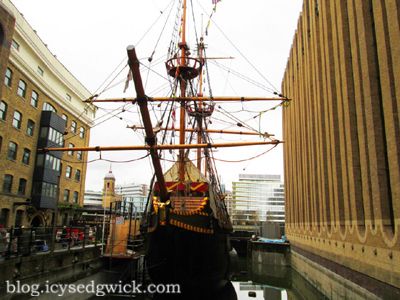
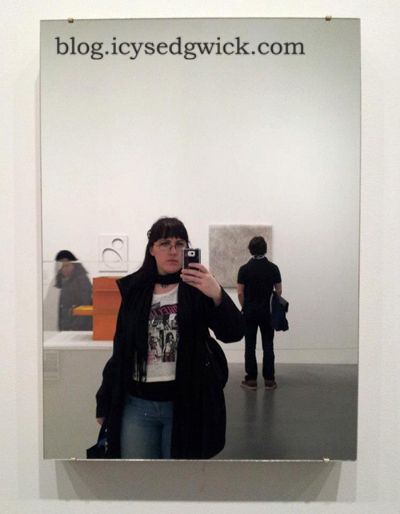
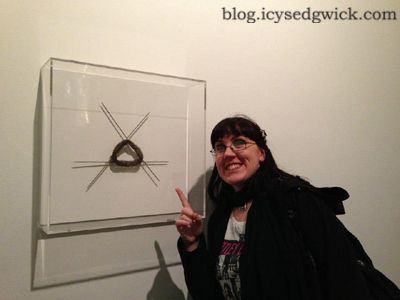

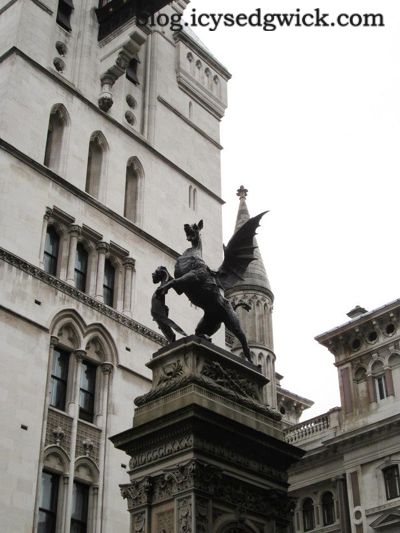
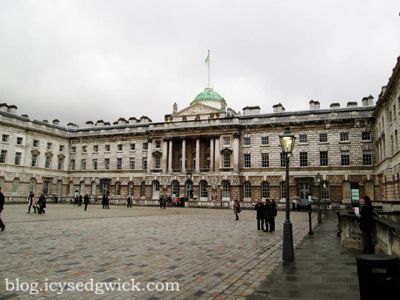
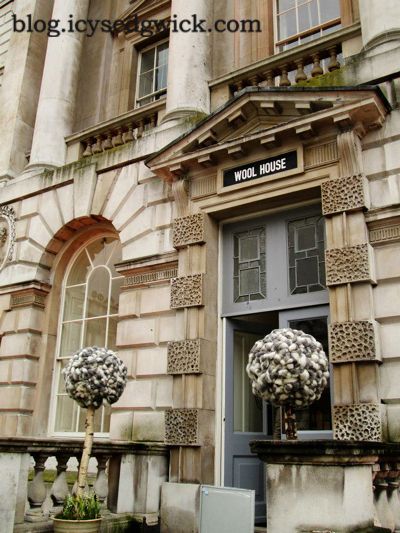

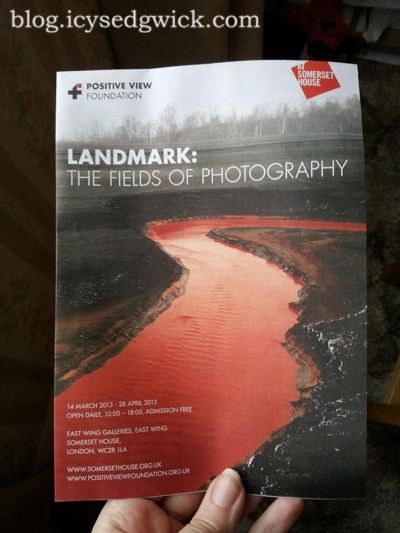








5 comments:
A wonderful tour of a place I hope to see myself someday. I'm with you about the glass monuments to commerce... I can go down to Atlanta if I want to see that. It's a pity that much of the Roman and medieval structures are gone. Did the Blitz do for much of it, or just "progress"?
I'm surprised that circular knitting art piece is from 1969, but thrilled that it's on display, especially in a gallery that commands so much respect! I completely agree with you about the "knitting is art" stance -- just had a run-in with a painter about that last weekend.
Thanks for this and the previous blog post! Mostly it just makes me want to go back and visit again, but it's fun to see how someone else's trip unfolded.
Larry - The Victorians cleared out a lot of the medieval structures, and the building boom in the twentieth century saw a lot of the earlier structures 'hidden' before archaeologists could move in to save sites. Apparently there was a Jacobean mansion in the vicinity of Nelson's Monument but that's long since gone.
Katherine - I don't like a lot of the stuff in the Tate Modern and I know some people were confused why knitting would be in there, but why shouldn't it? After all, a lot of the existing work looks like someone just spilled a contents of trash on the floor, so why not include knitting which actually requires thought and some technical skill?
I toured the Tower in 1999. What impressed me most was not the jewels, the ravens, the worn stone stairs or the Water Gate... it was the guards. From a distance, they were all goofy cosplay, shiny red velvet and gold tassels. The precision marching looked just like it did on TV (this was before YouTube).
Up close, however, they were clearly bad-assed senior marines with fully functional, fully modern, gleaming black assault rifles. They weren't playing at it... they took the whole thing seriously. It was this mixture of ancient and modern that encapsulated London for me.
It was such a good weekend. Very cultural and we had a good laugh. I'm resisting the urge to quote a certain TV show here ...
Post a Comment